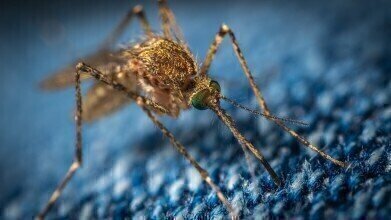GC, MDGC
Fighting Malaria’s ‘Bad Air’ with Chromatography
Feb 25 2015
The statistics that surround malaria are frightening. According to the World Health Organisation (WHO), malaria is present in over 100 countries and threatens over half of the world’s population. The latest estimates show there are almost 200 million cases of malaria — every year, and that up to 750,000 people died from malaria in 2013 — most deaths being children under five years of age. To put that into context — it is the equivalent of the city of Leeds dying every year due to the bite of an insect.
Fighting mosquitoes and malaria is high on the agenda of many health organisations around the world, and scientific research into malaria is constantly looking at ways to combat the disease. A recent paper has reported some progress on a previously little understood phenomenon. Let’s see what has been uncovered about this killer.
Mosquitoes and Malaria
Malaria is caused by the Plasmodium parasite which is passed to humans by the bite of the female Anopheles mosquito. There are five types of Plasmodium parasites that cause malaria in humans, and the type of Plasmodium parasite that infect you depend on geographical areas to a large extent. The mosquitoes that pass on malaria are known as ‘night-biting’ mosquitoes as they mainly feed on human blood between dusk and dawn.
Malaria can be spread by infected mosquitoes (the vector) biting a human (the host), or by a ‘clean’ vector biting an infected host. If an infected mosquito bites you it releases the Plasmodium parasite into your bloodstream — with the parasite travelling to the liver. In the liver the disease develops and re-enters the bloodstream targeting the red blood cells. The parasites grow and multiply in the red blood cells — with infected blood cells bursting and releasing more parasites into the bloodstream to continue the infection cycle. Understanding the disease will help researchers to attack malaria on several fronts as shown in these articles: Malaria Vaccine Proves Successful in Mice and Molecular Target to Control Malaria Identified.
‘Bad Air’ — Malaria’s Odour Changes
It had been shown in previous studies that a host infected with malaria was more likely to attract mosquitoes. This would help to spread the disease quicker as an uninfected mosquito could bite the host and become infected. But no mechanism had been identified to explain the enhanced attraction of mosquitoes to an infected host.
The answer to this change could lie in smell it seems. A paper published in PNAS entitled ‘Malaria-induced changes in host odours enhance mosquito attraction’ has shown that the Plasmodium parasites alter the smell of the host to make them more attractive to mosquitoes. Infected mice were more attractive to mosquitoes compared with an uninfected control group. By analysing volatiles from the infected hosts and controls — using gas chromatography and mass spectrometry — they were able to identify some of the compounds responsible for the enhanced attraction.
The next stage is to show that the odour changes are present in human hosts, then we might understand a little more about this deadly disease.
Digital Edition
Chromatography Today - Buyers' Guide 2022
October 2023
In This Edition Modern & Practical Applications - Accelerating ADC Development with Mass Spectrometry - Implementing High-Resolution Ion Mobility into Peptide Mapping Workflows Chromatogr...
View all digital editions
Events
Apr 23 2024 Kintex, South Korea
Apr 23 2024 Seoul, South Korea
Apr 28 2024 Montreal, Quebec, Canada
May 05 2024 Seville, Spain
May 15 2024 Birmingham, UK














